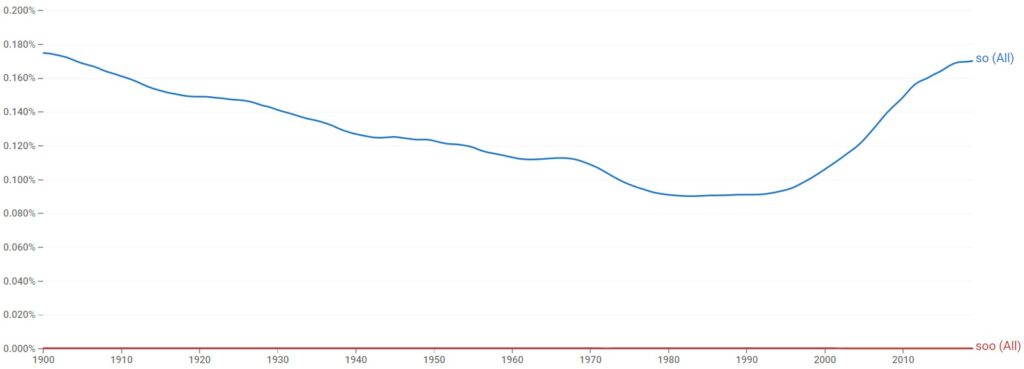Have you ever received a text message from a friend that started the conversation by saying, “Soo” and followed with an interesting story?
We want to know if “Soo” is the same as “So”. Also, if both forms are correct and when should we use each. Let’s take a look!
Soo vs. So – What’s the Difference?
“So”, is an adverb that has different applications. For example, it can mean “very”, or “extremely”. It can also mean “in the same way”, or be used to avoid repeating a phrase said earlier. “Soo” isn’t a word, although it can be informally used as an exaggeration of “So”.

Take a look at the examples below:
- So, will you meet me there?
- Soo, will you meet me there?
- We went to Peter’s house and it was so big.
- We went to Peter’s house and it was soo big.
The two sets of examples show “So” used with different meanings. In the first set, “So” is used as conjunction at the beginning of a sentence to start a conversation or change the subject. The first sentence is correct, and you can replicate it.
The second sentence brings “Soo”. It’d be acceptable to be used orally, to bring emphasis to the sentence, and in a very informal setting, such as a text message as a fun way to introduce a topic.
“Soo” wouldn’t be acceptable or appropriate in any written communication, casual or not, outside of that setting.
Is “Soo” a Word?
“Soo” is an exaggerated, alternate version of the word “So”. You won’t find that form in any serious material or content, formal or informal. But it can be used in very casual conversations between friends, via text messages, and social media, for example.
Take a look at the examples below:
- Valentina is soo pretty!
- There is soo much work to do, that I don’t even know where to start.
- Soo true! You make a good point.
- I am soo happy right now.
- You look soo gorgeous!
When to Use “So”
“So” is a word that can be used in many different ways. For example, “So” can mean “very”, “extremely”, or “to such a degree” (especially if at the end of a sentence). “So” can also mean “in the same way”, or “in a similar way”.
“So” can be used to indicate something is certain or true, and to avoid repeating the same phrase or word a second time. According to The Cambridge Dictionary, “So” can also be used to argue against a negative statement and before a noun or the word “not” for emphasis.
There are many ways you can use the word “So”, and here are some examples:
- Diana looks so pretty in that dress!
- I wish I didn’t have so much work to get done.
- That is so not true, I won’t even argue with you.
- Looking at this picture I remember I was so happy that day.
- Why do you hate John so?
Which Is Used the Most?
Which one of those forms is used more often, “So” or “Soo”? Let’s take a look at the graph from Google Ngram Viewer below.

As expected, “So” is the prevalent form. It’s correct and appropriate, and it makes sense that people would use it more often.
“Soo” appears at the very bottom of the graph, indicating it’s not used much. Keep in mind that “Soo” is used a lot in conversations, to emphasize the story that’s being told. Also, it’s more common in extremely casual interactions, like text messages, social media, etc.
That’s to say that you’re quite likely to use the extended “Soo” version at some point, and it’s ok. That’s how people communicate nowadays. However, don’t lose sight of the fact that this isn’t an acceptable form to use in any serious communications, even casual ones, outside of those contexts.
Final Thoughts
In this comparison, “So” is the correct, appropriate form for the word we use so much in many different situations. “Soo” is undeniably used too, but mostly in verbal conversations and extremely casual interactions, like text messages and social media. You should avoid it in serious conversation, formal or casual.
